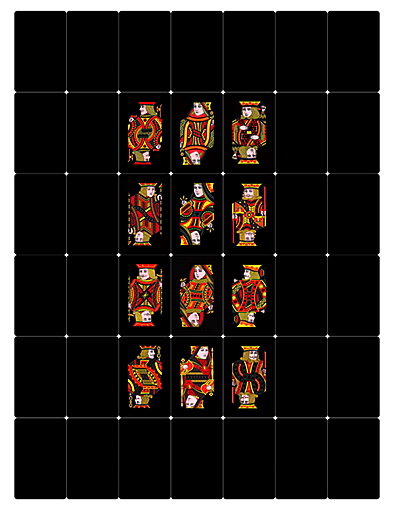Pip Culbert/Paul Saint
dal 1/11/2007 al 10/1/2008
Segnalato da
1/11/2007
Pip Culbert/Paul Saint
Gitte Weise Gallery, Berlin
Pip Culbert - 'Flag': Discarded objects from our daily life find a new context and are literally given a new existence. Paul Saint - 'Rules + suits': a Warholian philosophy turned inside out. Sculptures become reflective walls with objects in front of them to frame the space on both sides.

Flag/Rules + suits
Pip Culbert - Flag
Pip Culbert's work transcends the borders between art and every-day-life.
Discarded objects from our daily life, e.g.
trousers, shirts, bags, and cushions find a new
context and are literally given a new existence.
Pip Culbert chooses objects we all recognize from
our personal use challenging the way we see and
think about them.
On first look we encounter the fabric outlines of
objects whose inner mass has been cut away
leaving behind all but the seams and threads.
Weightlessness pervades these works and we wish
to hold them to discover their two-dimensional
secret.
They simulate depth and volume yet remain virtual
in character. What at first may appear abstract
and timeless can somehow revert simultaneously to
a metaphor for personal memory. The works
mathematical rigor and economy of line is
balanced by their materiality as it is with the
presence of used objects or articles of pre-worn
clothing.
Pip Culbert's wall-drawings open a space between
the aesthetic experience of vision and the
associations these works invoke. Here the mantra
(less is more) this apparently hackneyed
circumscription for the concentration on
essentials - is made accessible to the viewer in
a surprisingly new and vivid way.
----------------------
Paul Saint - Rules + suits
Same Difference
The pots have become mirrors and the mirrors have
become pots. They are each the other's fall guy
in a conspiracy of forms. Inside and outside are
now on the same side of the equation, because now
there are no sides. And now there is nothing but
sides. Space is simultaneously open and closed.
(Warhol liked to think about space. He said, 'My
favourite piece of sculpture is a solid wall with
a hole in it to frame the space on the other
side'.1) Things are inside and outside at the
same time. Things seem the same yet different.
Same difference.
Paul Saint's work is a Warholian philosophy
turned inside out. Sculptures become reflective
walls with objects in front of them to frame the
space on both sides. The coupling of figures and
grounds are threaded together through the rules
of geometry, and then slowly sabotaged. The weave
is loose and appearances are leaking. ('There's a
hole in my bucket, dear Liza, dear Liza'.) The
threshold of equivalence bends with every
sidelong glance. Each repetition brings
discrepancy rather than symmetry. The world
appears to perpetually expand under the strain of
vision, moving beyond the realm of visual
coherence. Only visual approximations remain
within reality's fray. They are the second
thoughts that idle in our line of sight, blind
spots on a view to infinity.
The prints are more like charts. They are
analogous, not interchangeable. They resemble
readouts from a polygraph test, measuring the
flow of perception in the rise and fall of
suspicion and trust. The suits appear in this
(geo)graphic locale. They invent and undo the
sovereignty of space depending on how their hand
has been dealt within the terrain.
It is the other rulers, however, that form a
common ground of knowledge across Saint's work as
a whole. They appear as the measure of the world
and the world itself. On the surface, the rulers
are root systems and celestial bodies, revealing
the earth's sedimentary layers and vast horizons
with empirical faith. Beyond the façade, when the
rulers are suspended in space, they expose the
fault lines that connect reality to it likeness.
Rules and Suits are a set of plans designed to
be misread. Deliberately embedding loopholes and
flaws within the architecture of his work, Saint
creates a logic of shaky foundations. The rules
have been broken and the suits have been worn.
And when things fail to fall apart, it's always
better to fix them until they break. Sometimes
it's better to feel useful rather than obsolete.
Sometimes things are right when they are wrong.
Right?
Gitte Weise Gallery
Tucholskystrasse 47 - Berlin



